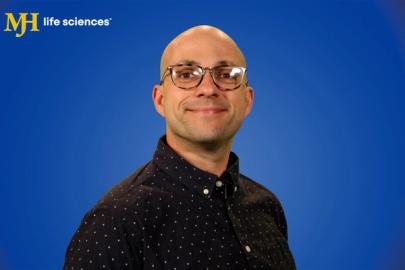Glossary:
Orphan Drug Designation: Status granted by the FDA to a drug or biological product to prevent, diagnose or treat a rare disease or condition.
© 2025 MJH Life Sciences™ and CURE - Oncology & Cancer News for Patients & Caregivers. All rights reserved.

A nationally-published, award-winning journalist, Alex Biese joined the CURE team as an assistant managing editor in April 2023. Prior to that, Alex's work was published in outlets including the Chicago Sun-Times, MTV.com, USA TODAY and the Press of Atlantic City. Alex is a member of NLGJA: The Association of LGBTQ+ Journalists, and also performs at the Jersey Shore with the acoustic jam band Somewhat Relative.
A phase 2 clinical trial of a new brain cancer treatment is underway.
The first three patients have been dosed in a clinical trial studying a new treatment for glioblastoma, a type of brain cancer, intended to be used in conjunction with radiation.
The initial trio of patients with glioblastoma have begun treatment with ropidoxuridine in a phase 2 clinical trial, according to a news release from pharmaceutical company Shuttle Pharmaceuticals.
“The initiation of patient dosing in our phase 2 trial of ropidoxuridine for the treatment of patients with glioblastoma is a significant milestone for both Shuttle Pharma and the thousands of patients with brain tumors who currently lack effective therapies,” stated Shuttle Pharmaceuticals’ chairman and CEO Dr. Anatoly Dritschilo in the news release. “The results of this trial will be important as Shuttle Pharma looks to leverage radiation sensitizers to increase cancer cure rates, prolong patient survival and improve quality of life for patients suffering from glioblastoma.”
Ropidoxuridine, according to the National Cancer Institute, is an oral drug that, upon administration, is converted into idoxuridine, and is incorporated into DNA during replication, in turn working to sensitize cells to ionizing radiation. When compared to idoxuridine, ropidoxuridine is reported to have a lower toxicity profile and improved anti-tumor activity, the National Cancer Institute said on its website.
Glossary:
Orphan Drug Designation: Status granted by the FDA to a drug or biological product to prevent, diagnose or treat a rare disease or condition.
Glioblastomas, according to the American Cancer Society, are grade 4, or the fastest-growing, type of astrocytomas, a type of tumor that starts in the astrocytes. Astrocytes, according to the National Cancer Institute, are types of glial cells, or cells that hold nerve cells in place and help them work how they are supposed to.
The majority of astrocytomas, the American Cancer Society stated, can spread through the brain and blend in with brain tissue, and can sometimes spread along the cerebrospinal fluid pathways. Of note, hey rarely spread outside the brain or spinal cord.
More Glioblastoma News: FDA Accepts New Drug Application for Pixclara for Glioma Imaging
Known as a radiation sensitizer, ropidoxuridine is designed for use in combination with radiation therapy to treat glioblastoma. Glioblastoma, as stated in the company’s news release, has no known cure, and Shuttle Pharmaceuticals has received Orphan Drug Administration for the treatment.
The phase 2 clinical trial, according to its listing on ClinicalTrials.gov, is currently recruiting patients and expects to have an eventual enrollment of 54 patients. The trial, according to the listing, is estimated to completed in February 2027.
The trial is among patients with IDH wild-type, methylation negative glioblastoma, for whom the current standard of care is radiation, with more than half of these patients surviving for less than a year following diagnosis, according to the news release.
Initially, 40 patients will receive either 1,200 milligrams a day (20 patients) or 960 milligrams a day (20 patients) of ropidoxuridine in order to determine an ideal dose of the drug, before adding an additional 14 patients to receive what has been deemed to be the optimal dose. Researchers will study patients’ survival as compared to that of historical controls, with the news release stating that the trial will be completed over 18 to 24 months.
Learn More: Informed Consent from Patients With Glioblastoma Is a ‘Big Thing’
For more news on cancer updates, research and education, don’t forget to subscribe to CURE®’s newsletters here.
Related Content: